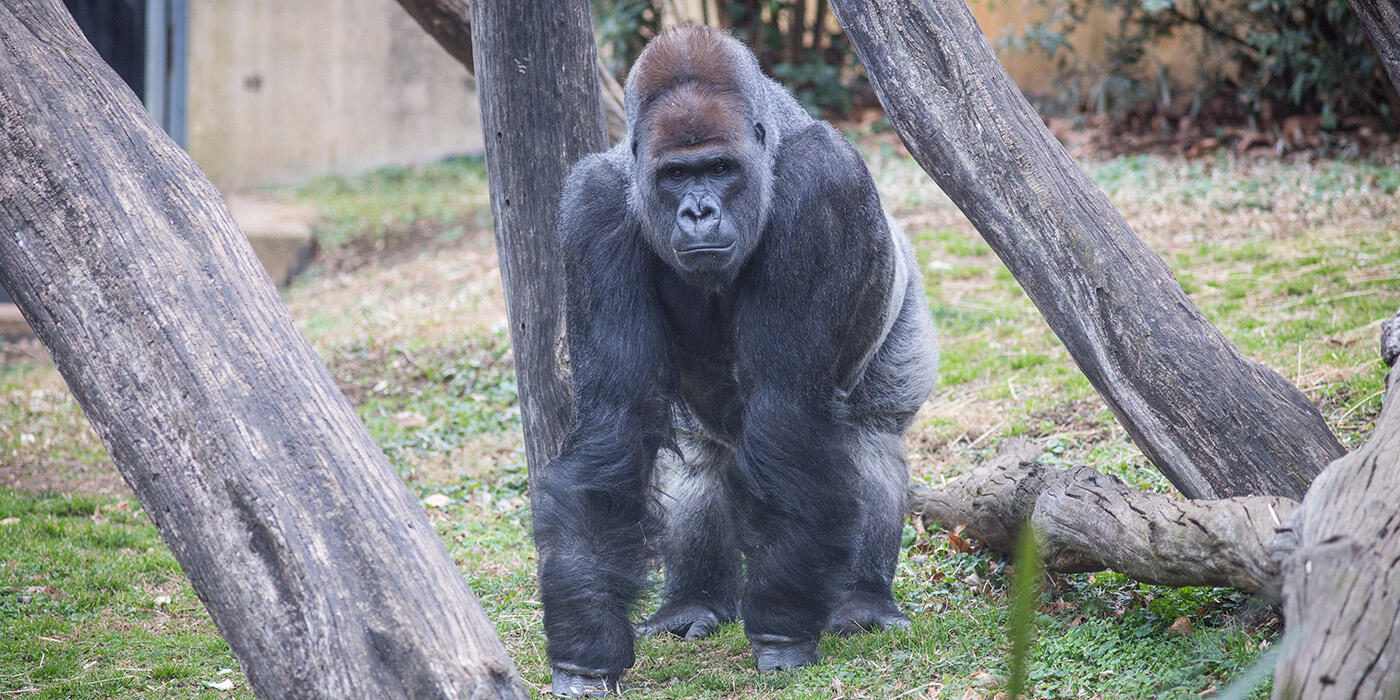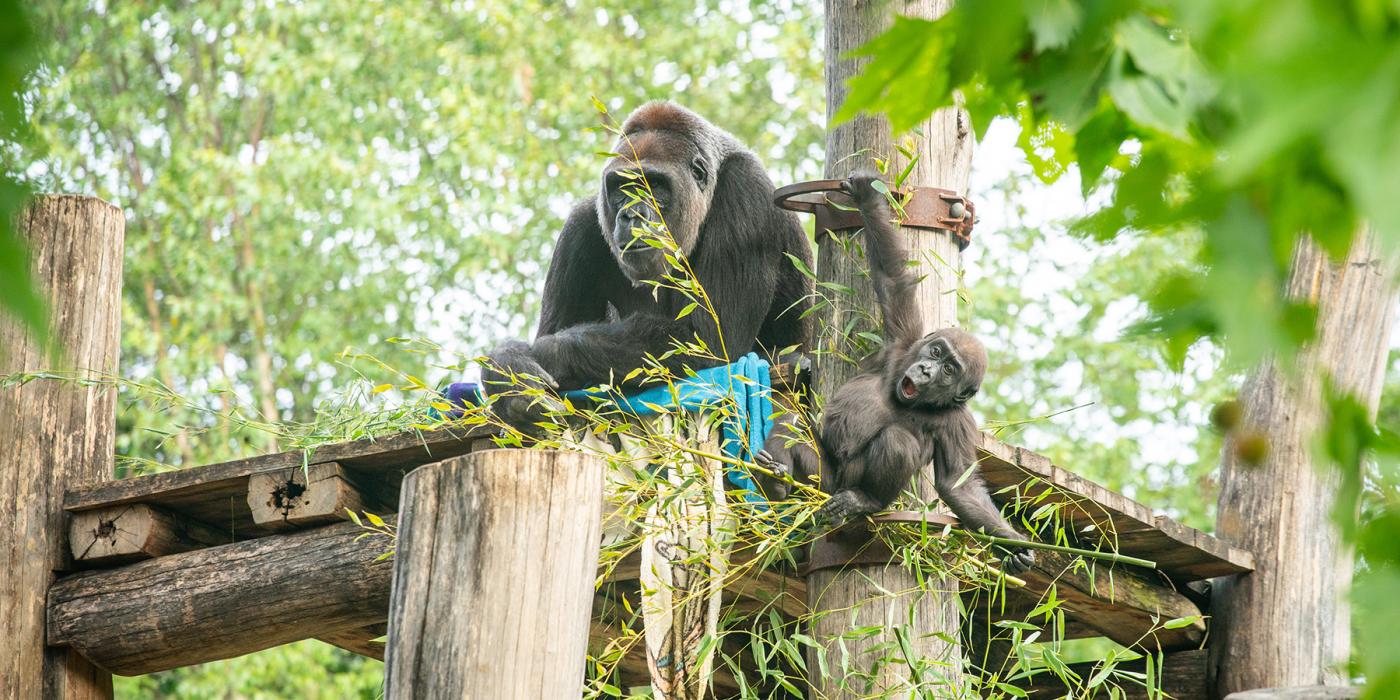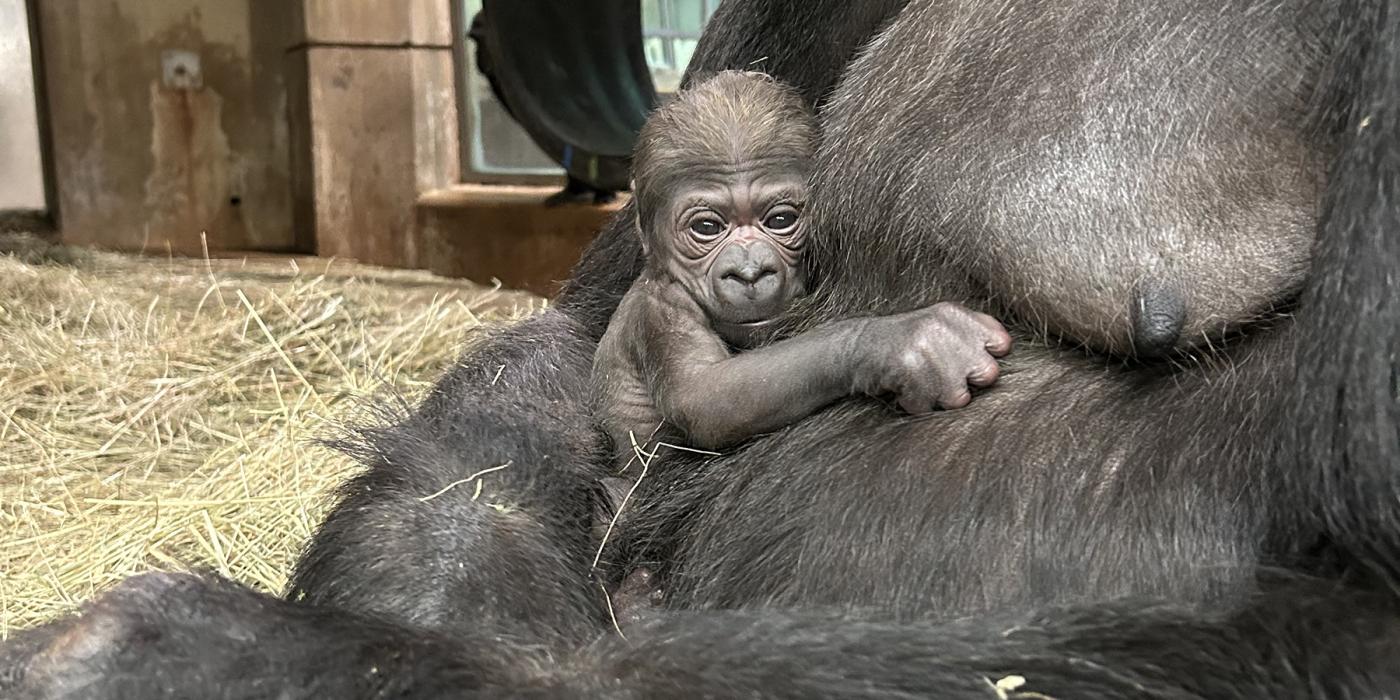Gorilla Group Social Structure
The Gorilla Species Survival Plan (SSP) is dedicated to providing a healthy, genetically diverse and self-sustaining population of Western Lowland gorillas in zoos across the United States. One goal of the Gorilla SSP is to maintain gorillas in species typical groupings, either as a troop consisting of a silverback male, several females, and their dependent offspring, or as a bachelor group, which is a social grouping of gorillas consisting of only males. The Gorilla SSP started creating bachelor groups in U.S. zoos in the late 1980s in order to mimic what occurs in the wild, and has gathered information along the way of what makes these bachelor groups successful in a zoo setting.
As juvenile male gorillas mature, they reach a point where they are referred to as blackback males, simply meaning they are too old to be a juvenile, yet too young to be a silverback. In the wild, these blackback males generally voluntarily leave their natal group around the age of eight years old, though there are instances when the silverback of their natal group forces them out. They can then band together with other blackback males (creating a bachelor group) but typically don't acquire females of their own until they are over 13 years old. Gorillas in captive settings are limited by their ability to be able to leave their natal group when they reach the blackback stage, so keepers must monitor behaviors closely to determine when they should be separated.
Gorilla social groupings across U.S. zoos are determined by the Gorilla SSP on a case to case basis based on the needs of the population. Because a typical troop consists of one male gorilla with several females, the Gorilla SSP needed to determine how to manage males that may not have females to pair up with. At Smithsonian's National Zoo, our two blackback males, Kwame and Kojo, had been identified as two males to eventually form a bachelor group. They make excellent candidates because they are very close in age, and are full brothers that have lived together their entire lives. Staff and volunteers have been monitoring the blackbacks behavior for several years in their natal group to determine when that bachelor group would be created. The Gorilla SSP was impressed that the blackbacks, then 13 and 11 years old, had peacefully remained in their natal group for so long! However, in late January, keepers noted increased aggression between the blackback males and the silverback, Baraka. To limit further injury and aggression, the decision was made to create the bachelor group.
Visitors can now see the newly formed bachelor group consisting of the two blackback brothers, Kwame and Kojo at the Great Ape House. The other gorilla troop consists of silverback Baraka, and females Mandara, Kigali, and Kibibi. They will remain two separate groups that will rotate indoor and outdoor enclosures. Please stop by the Great Ape House and watch their new social dynamics!
Related Species:


